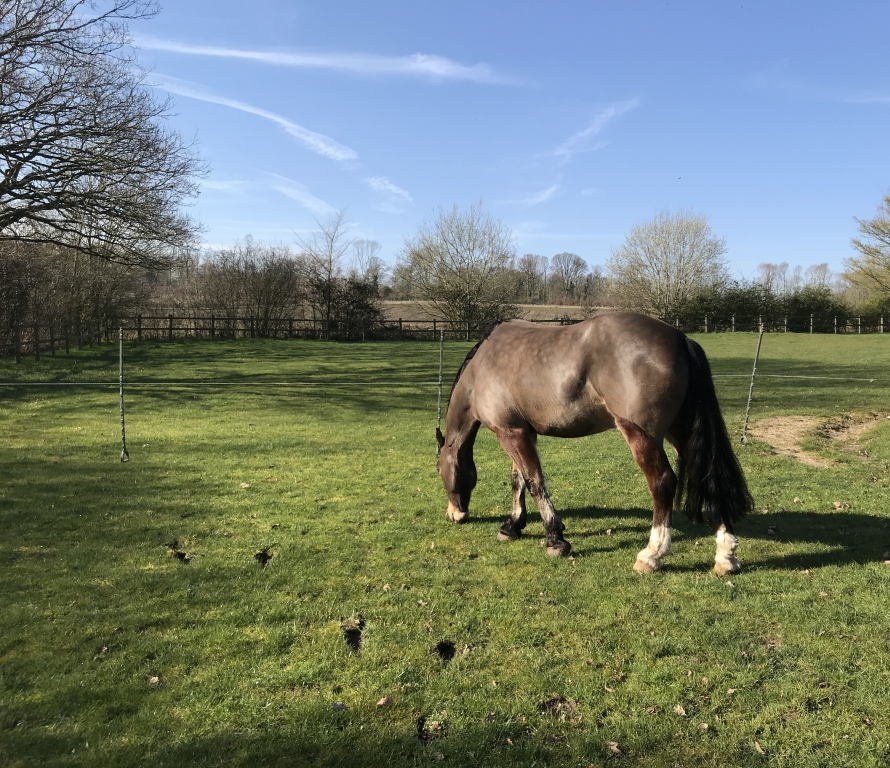
Feed Manufacturer Clocks Up 28 Published Works In 16 Months To Help Combat Laminitis
The makers of SPILLERS™ have been associated with the publication of 28 laminitis-related papers, chapters and abstracts since the beginning of 2023, demonstrating their active involvement at the cutting edge of laminitis research, to help reduce the occurrence of this common, debilitating condition.
“So many horse owners live in dread of laminitis and it is one of the most common reasons they contact the SPILLERS™ Care-Line for advice, especially in the spring,” said Sarah Nelson Product Manager at Mars Horsecare, home of the SPILLERS brand. “We are on a mission to increase understanding of the risk factors for laminitis so that we can help reduce cases. We are extremely proud of the magnitude and quality of our research, and the fact that we can share some of the outcomes as practical advice for horse owners to help them reduce as many of the risk factors as possible, all year round.”
Laminitis can be described simply as damage or disruption to the laminae (the tissues attaching the pedal bone to the hoof wall), causing varying degrees of pain and lameness. Hyperinsulinemia associated laminitis or ‘HAL’ is now considered the most common form of laminitis and includes cases of laminitis associated with equine metabolic syndrome (EMS) and typically with Pituitary Pars Intermedia Dysfunction (PPID)
The research, in the form of published papers, chapters and abstracts, was conducted in association with the SPILLERS brand, via the WALTHAM™ Equine Studies Group and their international collaborators. Much of it has been presented at key equine veterinary internal medicine and laminitis meetings as well as symposia in the UK, Europe and the US during the past 16 months.
Five papers, for example, were published in the special endocrinology issue of the Equine Veterinary Journal (EVJ), accounting for more than 25% of all the papers included. One of these papers (Predictors of laminitis development in a cohort of non laminitic ponies) won the Peter Rossdale Equine Veterinary Journal (EVJ) Open Award last year.
The scope of the work includes research in a variety of areas, from aspects of endocrinology to practical information around water soluble carbohydrate content, strip grazing, nutrient analysis and faecal microbial metabolite profiles:
The titles of the published works are listed below:
· Predictors of laminitis development in a cohort of non-laminitic ponies
· Metabolic Syndrome
· Water-soluble carbohydrate content in equine pasture: Impact of fertilization, season, and grass species
· Strip grazing: Changes in biomass, nutrient content and digestibility of temperate, midsummer pasture by strip-grazed or ‘free’-grazing ponies, over 4 weeks
· Dietary management of laminitic animals
· Development of a rapid screening assay for monitoring the relative nutritional value of pasture samples
· Association between insulin dysregulation and ACTH in aged horses and ponies with no clinical signs of PPID
· Insulin dysregulation is associated with high autumnal ACTH concentrations in aged horses and ponies with no clinical signs of pituitary pars intermedia dysfunction (PPID)
· Identifying possible thresholds for nonstructural carbohydrates in the insulin dysregulated horse
· A glucagon-like peptide-1 receptor antagonist reduces the insulin response to a glycaemic meal in ponies
· Insulin dysregulated horses metabolic responses to forage pellets
· Insulin, but not adiponectin, is detectable in equine saliva using an automated, commercial assay
· Factors associated with insulin responses to oral sugars in a mixed‐breed cohort of ponies
· Short‐term induced hyperinsulinaemia and dexamethasone challenge do not affect circulating total adiponectin concentrations in insulin‐sensitive ponies
· Relationships between total adiponectin concentrations and obesity in native‐breed ponies in England
· Effect of dopamine depletion on insulin sensitivity and insulin response to a glycaemic meal in Standardbred horses
· Evidence for dopamine production and distribution of dopamine D2 receptors in the equine gastrointestinal mucosa and pancreas
· Insulin response to short-term transportation stress in horses: Effects of age and insulin dysregulation
· Plasma high molecular weight adiponectin concentrations in a population of aged horses and ponies with and without PPID
· Evaluation of adiponectin and serum amyloid A concentrations in equine diet-induced insulin dysregulation
· Plasma high molecular weight adiponectin concentrations in a population of aged horses and ponies with and without PPID
· Effect of pergolide in horses with insulin dysregulation with and without PPID
· Fecal microbial metabolite profiles are unaltered by laminitis history
· How challenging is it to find non-insulin dysregulated horses in an apparently clinically healthy herd of university horses?
· Can a common cereal grain be used to help indicate the presence of insulin dysregulation
· Effects of storage-handling methods on nutrient analysis of mixed-grass pasture samples
· Activin A concentrations as a potential biomarker for detecting insulin dysregulation and predicting laminitis risk in ponies
· Effect of dopamine on glucose-stimulated insulin production in the equine pancreas in vitro
“The more we understand about the predictors of laminitis risk, the better we will be able to reduce incidences of it,” said Sarah. “Our important collaborative research, most recently in relation to endocrinological disorders, is giving us hope for better future management and consequent significant reduction in cases of laminitis. Meanwhile our practical studies such as those on strip grazing and nutrient analysis are providing horse owners with hands-on advice for day-to-day management to help reduce risks.
“Rest assured, we will continue with our work until we can find ways to help keep every horse and pony as safe as possible from this dreaded condition.”
More from Spillers
- Feed brand invites horse owners to ‘Play Your Calories Right’ and win £250
- Feed manufacturer’s survey uncovers equine weight management obstacles
- Feed brand to donate to Redwings for every new Club member
- Win fame and free feed with leading equine nutrition brand
- Mars Horsecare appoints new Global Science & Nutrition Director

 2 years ago
2 years ago  1839 views
1839 views
